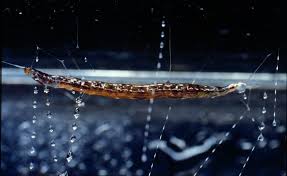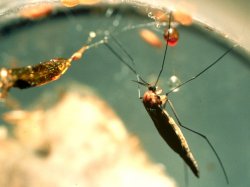A glowworm is the larvae stage in the lifecycle of a two-winged insect.
There are many different types of glowworm, but the one in New Zealand is Arachnocampa luminosa. 'Arachno' means spider-like, in reference to the way glowworms catch flying insects like spiders do and 'campa' means larva and 'luminosa' means light-producing.
The glowworm can control its glow by reducing the oxygen to the light organ. Insects fly towards the light and get stuck in the sticky lines produced by the glowworm saliva!
Here are pictures of a larvae and an adult


Here are pictures of a larvae and an adult

A glowworm uses its light to attract food and to burn off its waste. It is bioluminescence, a reaction between the chemicals produced by the glowworm and the oxygen in the air, what makes its tail shine.
Glowworms can survive only in very wet, dark places where their light can be seen.
They need a fairly horizontal ceiling from which they can hang their sticky feeding lines and shelter from the wind, so the lines don´t get dry out or tangled.
The Waitomo cave, a 30 million year old Oligocene limestone sinkhole, provides an abundance of insects brought into the cave via the river.
The Waitomo Glowworm Caves were first explored in 1887 by local Maori Chief Tane Tinorau accompanied by an English surveyor Fred Mace. Waitomo is a Maori word made up of 'Wai' (water) and 'tomo' (entrance or hole).